
This was a Michelin guided restaurant that we picked out for a fancy night in Ho Chi Minh City. Opened by French chef and previous Michelin-awarded-winner Hervé Rodriguez, in the developing District 2 of Saigon, Vietnam, Herve Dining Room aims to bring “culture” to the culinary scene of a new country.
Although after our meal we thought Herve’s goal was coming off as a typical colonizer trying to change the status quo, as Vietnam is already a country rich in food culture (albeit, traditional). Read on to see the details of each dish.
It’s also a red flag when the menu changes every 3 week. And the menu was $160 AUD (2,600,000 dong – about 3 months salary of an average Vietnamese citizen. This price tag reveals a lot about the real customer and Herve’s real intentions. (Vietnam doesn’t have a Michelin star at the moment, only a “guide”. Imagine being the first chef to earn a Michelin star in Vietnam hmmmm 🤔).
Although after our meal we thought Herve’s goal was coming off as a typical colonizer trying to change the status quo, as Vietnam is already a country rich in food culture (albeit, traditional). Read on to see the details of each dish.
It’s also a red flag when the menu changes every 3 week. And the menu was $160 AUD (2,600,000 dong – about 3 months salary of an average Vietnamese citizen. This price tag reveals a lot about the real customer and Herve’s real intentions. (Vietnam doesn’t have a Michelin star at the moment, only a “guide”. Imagine being the first chef to earn a Michelin star in Vietnam hmmmm 🤔).
Tasting Menu

We started with an interesting visual, followed by an eccentric pairing: David Herve oyster, Camembert, strawberry. Our eyebrows raised curiously and instantly.
The strawberry foam had a light texture. It had an artificial strawberry taste. The oyster was raw, with a creamy and puffy texture, sweet flavour. The Camembert cheese was mild, adding a thick gooey-ness to the bite.
It kind of worked because the focus was on unique nuttiness of the oyster and the cheese. Overall, the bite leaned more towards sweet, which was not how we like our oysters.
The strawberry foam had a light texture. It had an artificial strawberry taste. The oyster was raw, with a creamy and puffy texture, sweet flavour. The Camembert cheese was mild, adding a thick gooey-ness to the bite.
It kind of worked because the focus was on unique nuttiness of the oyster and the cheese. Overall, the bite leaned more towards sweet, which was not how we like our oysters.
This was green apple, foie gras, smoked eel.
On the bottom, we had the smoked eel “mayo”, which had the texture of curd or thickened cake.
Hidden is the green apple, cooked into a hard candy crisp. It brought the refreshment and cut to the “fatty” bite, but it also came with the sickly sweet and sour flavours of green apple.
And the foie gras was shaved lightly on top, which was done nicely. We wished they were more heavy handed on the shaving. It would have helped to balance the sourness of the apple better.
On the bottom, we had the smoked eel “mayo”, which had the texture of curd or thickened cake.
Hidden is the green apple, cooked into a hard candy crisp. It brought the refreshment and cut to the “fatty” bite, but it also came with the sickly sweet and sour flavours of green apple.
And the foie gras was shaved lightly on top, which was done nicely. We wished they were more heavy handed on the shaving. It would have helped to balance the sourness of the apple better.

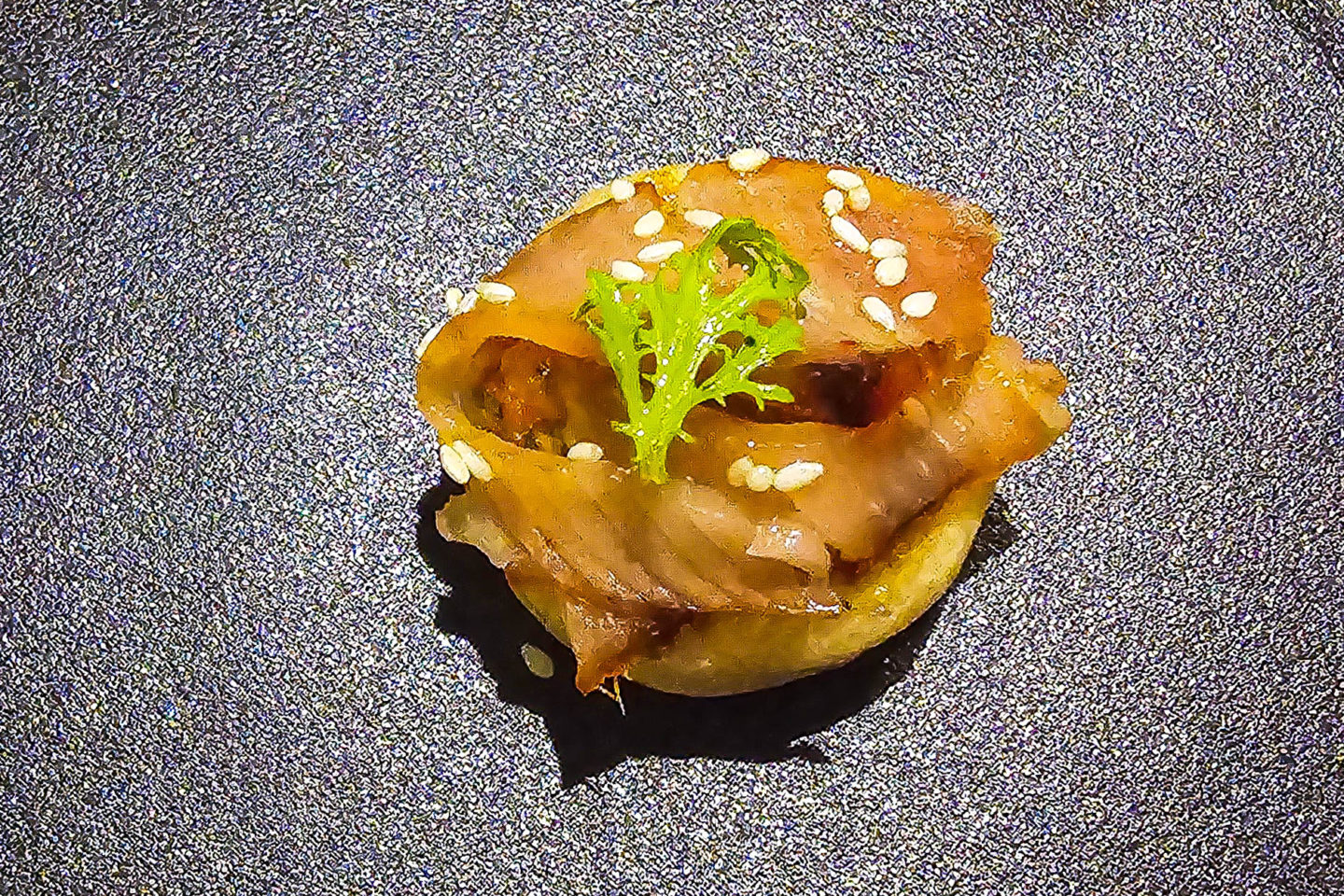
This was bao, tuna, red pistou.
Starting from the bottom, the bao was a thick and hollowed dough. It had a nice fried crust layer around it.
The tuna was cured. Personally, I’m not a fan of cured fish. It had a smokey aroma, that was overshadowed by the bao.
The red pitou was made from tomato sauce. It was sweet and slightly citric. And subtle. We needed more of it to balance the other two ingredients.
Starting from the bottom, the bao was a thick and hollowed dough. It had a nice fried crust layer around it.
The tuna was cured. Personally, I’m not a fan of cured fish. It had a smokey aroma, that was overshadowed by the bao.
The red pitou was made from tomato sauce. It was sweet and slightly citric. And subtle. We needed more of it to balance the other two ingredients.


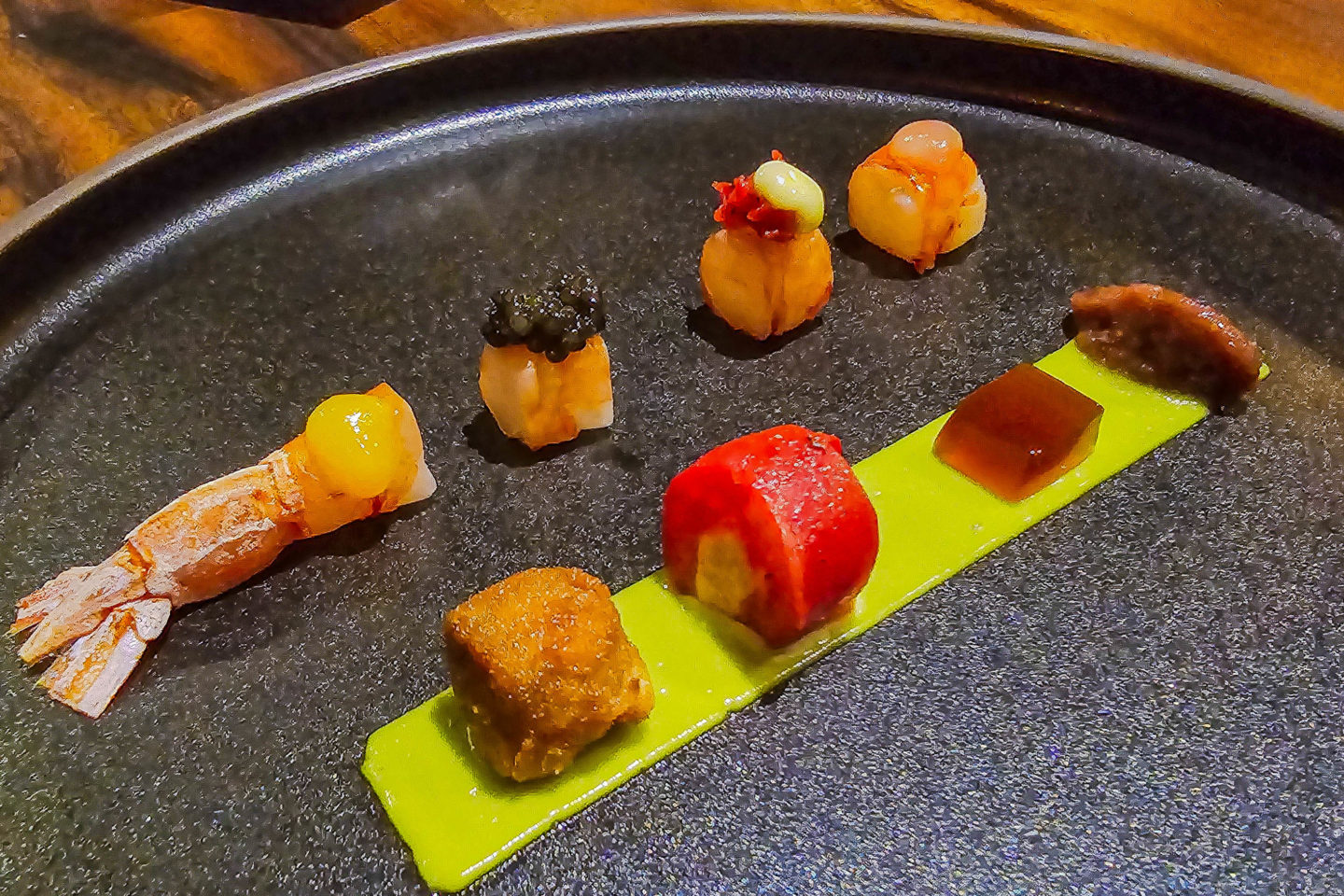
This dish was gambero rosso, fig, tomato and it had an intricate way of eating. We had to eat it from left to right, front to back. The left side was a deconstructed red prawn. The right panel was focused on sweet and citric.
The first pair was shrimp tail with stock, paired with a fried crouton. The crouton had shrimp head in it so it was bursting with flavour.
The second pair was a luxurious caviar and shrimp body, paired with tomato cream and tomato salad – a sweet and umami combo.
The third cross-section was shrimp with fennel and fig jam.
And the last was fig leaf oils made into mayo, with jelly (pepper and peanut).
We started off with balance but as the dish moved along, the red prawn (already sweet on its own) lost itself in the delectable sweetness of the figs and tomatoes.
The first pair was shrimp tail with stock, paired with a fried crouton. The crouton had shrimp head in it so it was bursting with flavour.
The second pair was a luxurious caviar and shrimp body, paired with tomato cream and tomato salad – a sweet and umami combo.
The third cross-section was shrimp with fennel and fig jam.
And the last was fig leaf oils made into mayo, with jelly (pepper and peanut).
We started off with balance but as the dish moved along, the red prawn (already sweet on its own) lost itself in the delectable sweetness of the figs and tomatoes.

This was a cherry roll.
It was sweet and tarty, with a good amount of cherry flavour. I would say it was 70% sweet, 30% tart. And inside was a mellow nutty flavour.
It was sweet and tarty, with a good amount of cherry flavour. I would say it was 70% sweet, 30% tart. And inside was a mellow nutty flavour.
This was cherry gazpacho.
This was also sweet and tarty, but more on the tarty side. It was light and ran smooth and quickly down.
This was also sweet and tarty, but more on the tarty side. It was light and ran smooth and quickly down.

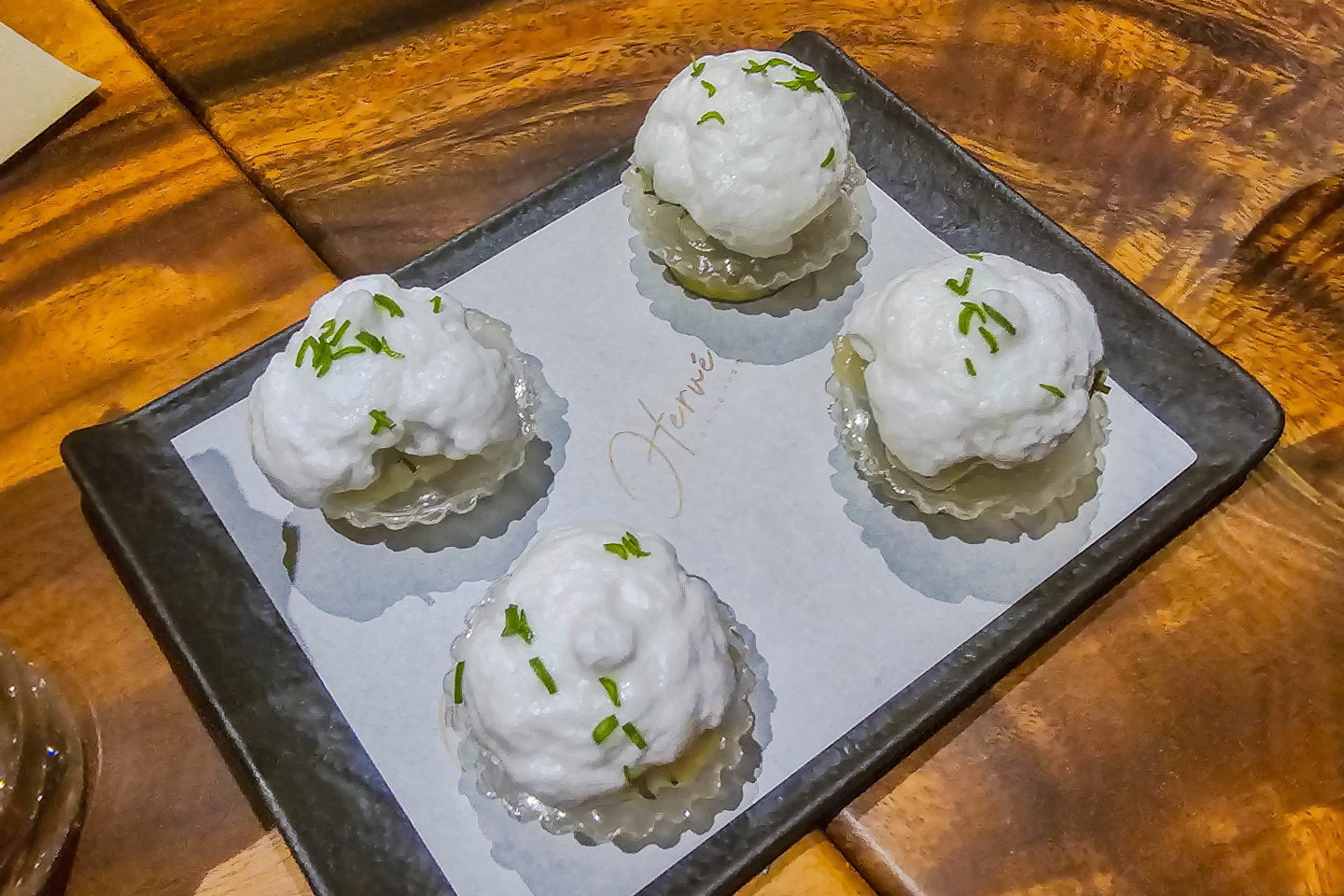

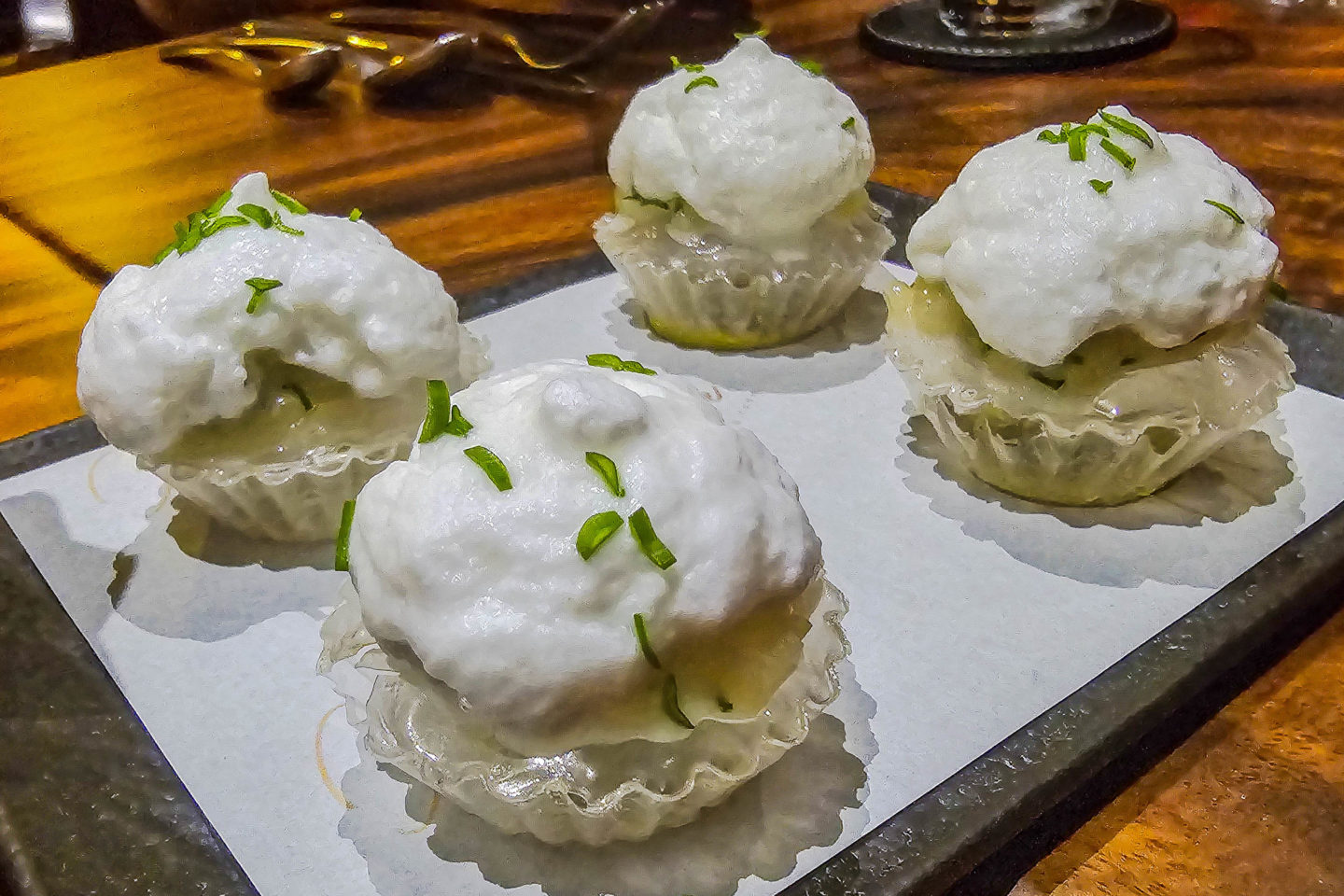
This was gastronomically fascinating: the crystal bread with scallop. There was diced scallops filled into a “bread” tart but did it work? Not really.
The foam melted quickly, becoming a watery sludge that took away the wow factor from the bread and scallop. And the hollow s pace between the scallop and bread gave it too much airy mouthfeel, leaving no chance for the scallop to shine. It was on the sweeter palate.
The foam melted quickly, becoming a watery sludge that took away the wow factor from the bread and scallop. And the hollow s pace between the scallop and bread gave it too much airy mouthfeel, leaving no chance for the scallop to shine. It was on the sweeter palate.



This was the lobster, candied carrot, maltaise. The carrot was very “candied”, giving it a sticky sweet flavour profile that made it almost artificial. There was sweet mango inside as the “stem”. It was too sweet for our liking.
But the lobster was perfect. This was the first dish where everyone unanimously agreed something was good. The crustacean was creamy with a mousse-like texture, having been cooked in butter.
But the lobster was perfect. This was the first dish where everyone unanimously agreed something was good. The crustacean was creamy with a mousse-like texture, having been cooked in butter.

This was fennel and truffle and visually, it was odd. However it did pique our interest. The truffle was black, and the sauce was delightful. It was moderately aromatic and served warm. Underneath was a celeriac risotto with a smooth texture and neutral starchy flavour. It needed a bit more salt. We were simply glad the savoury dishes were starting.
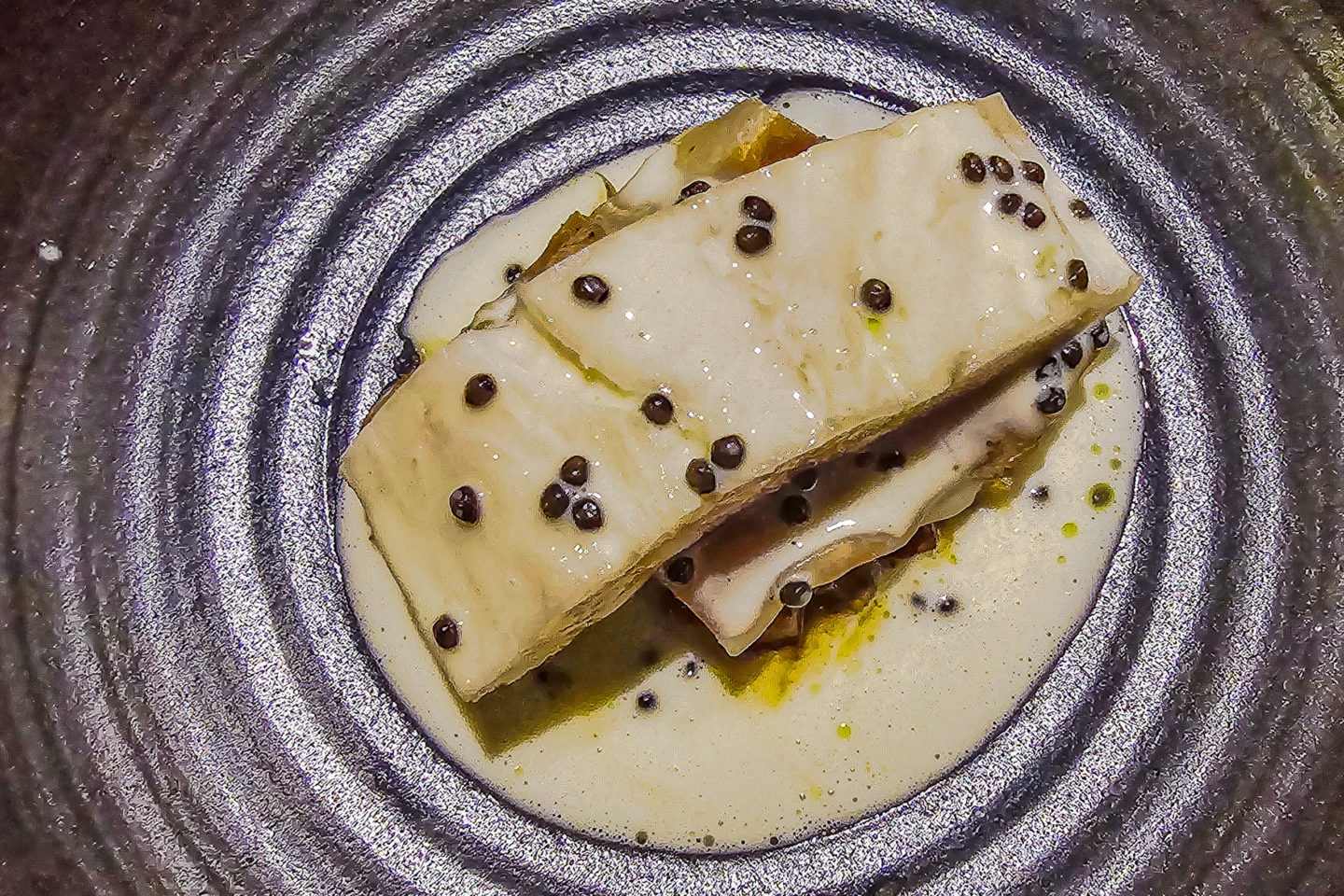

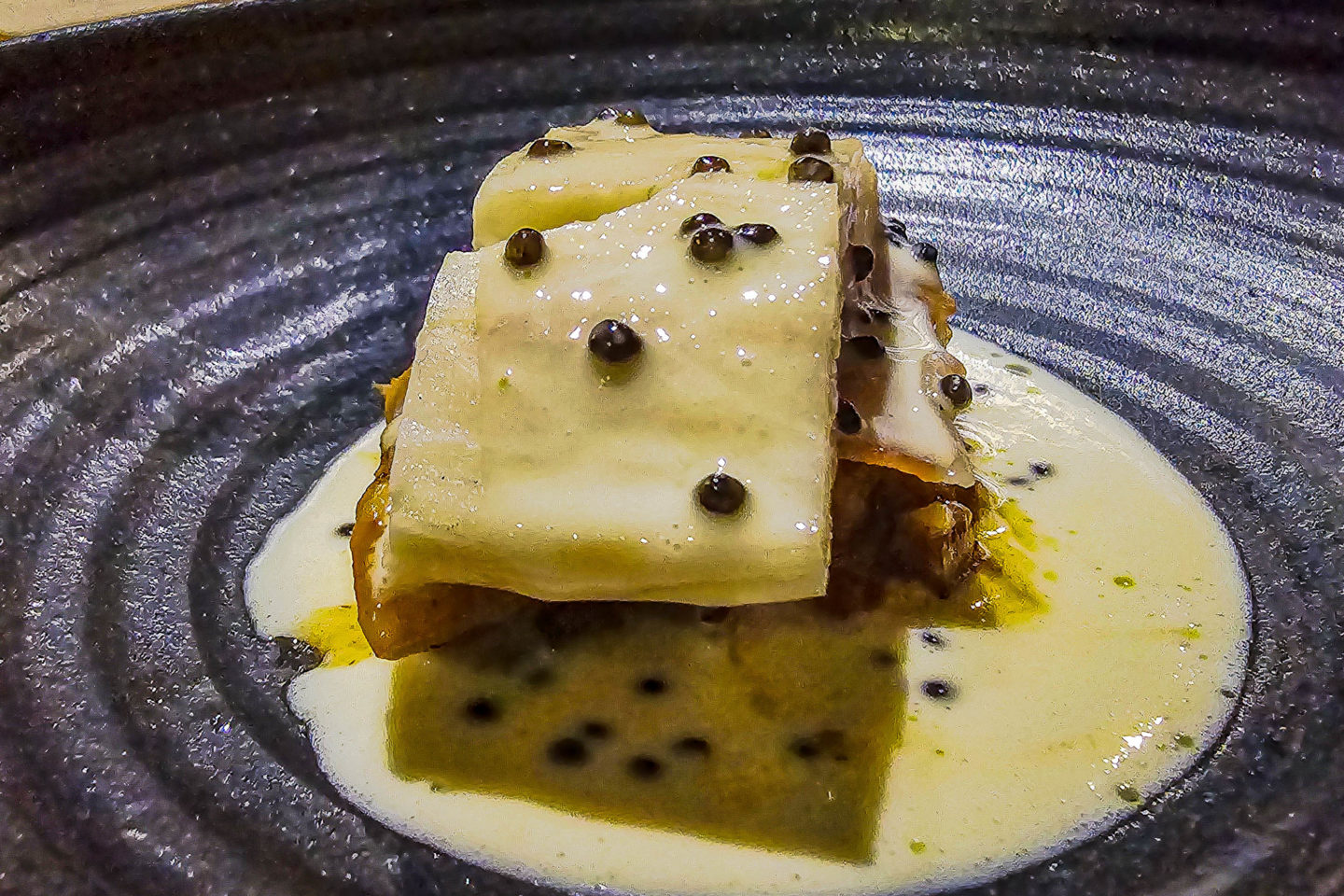
Our main was a Mediterranean seabass, artichoke, caviar and champagne. There was a overwhelming smoked-fish taste to it that it added a mild bitterness to the bite. The caviar was light and added pockets of saltiness, but it felt so pointless in this dish. A pinch of salt would have been suffice and more economical.
The sauce was creamy and a little foamy, which was good. The fish was cooked perfectly; tender flesh leaving behind an oily texture in the mouth.
The sauce was creamy and a little foamy, which was good. The fish was cooked perfectly; tender flesh leaving behind an oily texture in the mouth.

At this point in the menu, we were thinking this was some extreme experimental style of cooking but one look at the website showed “fusion French” – what is the other half of the fusion Herve?
This shocking all-black dish was the smoked mackerel, black pepper, cauliflower. For photos, there was no contrast visually, and to the naked eye, there was also not much “wow”. I think making a dish all black like this is delicate – yes, it was shocking but also in that shock, it removed the beauty of the dish. There are classier ways to add black to food.
Flavour wise, the mackerel had a nice smoke flavour but there was a bitter taste to it (probably from the squid ink). The cauliflower also added more bitterness than sweetness, and this could be because they used a lot of stems….? Overall, an okay dish.
This shocking all-black dish was the smoked mackerel, black pepper, cauliflower. For photos, there was no contrast visually, and to the naked eye, there was also not much “wow”. I think making a dish all black like this is delicate – yes, it was shocking but also in that shock, it removed the beauty of the dish. There are classier ways to add black to food.
Flavour wise, the mackerel had a nice smoke flavour but there was a bitter taste to it (probably from the squid ink). The cauliflower also added more bitterness than sweetness, and this could be because they used a lot of stems….? Overall, an okay dish.
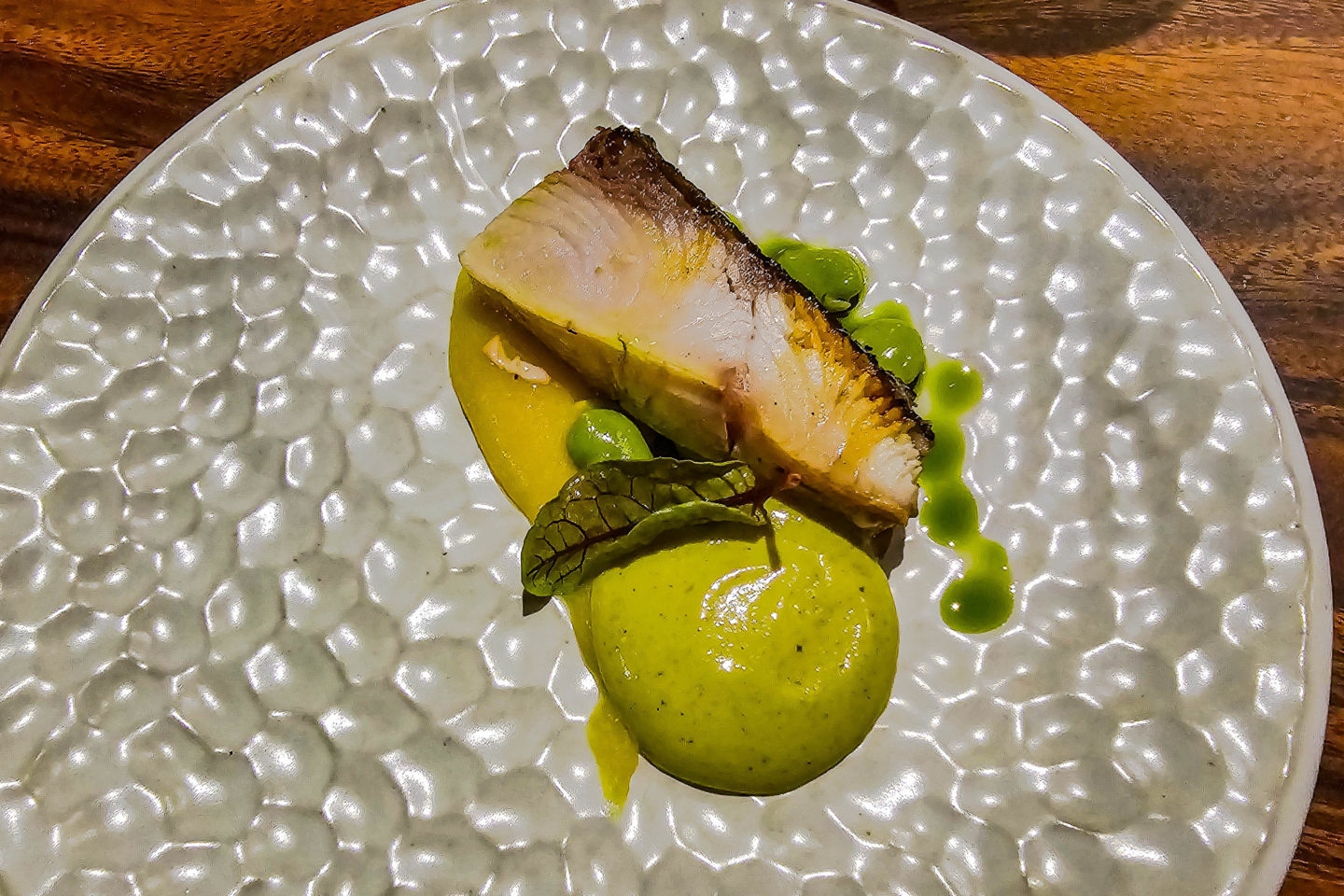
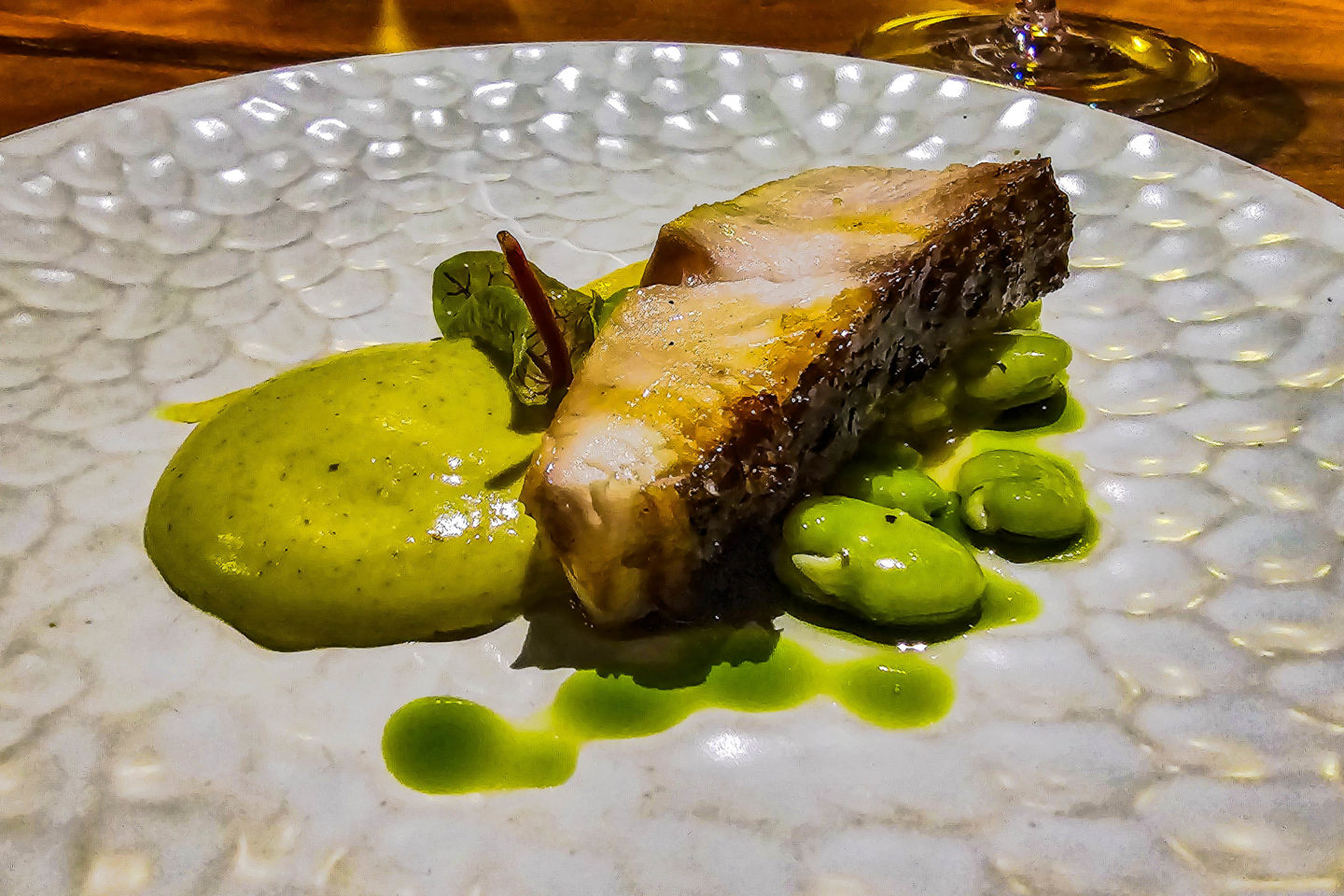
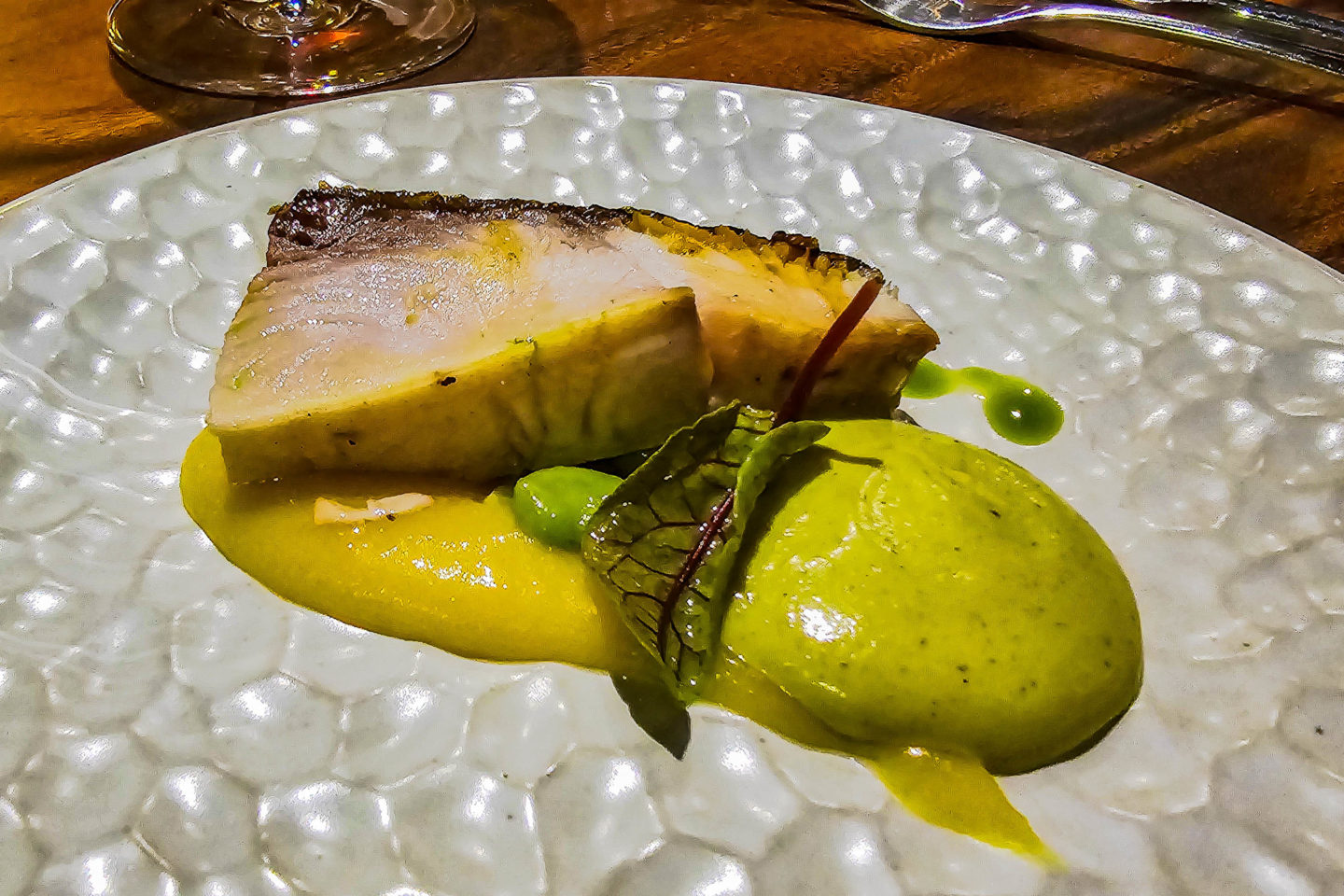
Next was the kampachi, fava bean, bergamote, matcha. The kampachi had been aged for 2 weeks and were imported from Japan. It was cooked nicely. The bergamote sauce was citric but also bitter, probnably from using too much of the white part of the fruit. Again, an okay dish.

We thought this was a palate cleanser but it was morue, chicory, iberico. Morue is fish belly and it was used to make the foam with the iberico fat. This led to a savoury porky foam flavour that was seasoned well. There were some bitter moments from either the chicory or the peanut but we overlooked it.
Our only tiff is that this entire dish was foam. Foam is nice when added to elevate a dish but when the whole dish is foam, it comes off as sloppy and lazy.
Our only tiff is that this entire dish was foam. Foam is nice when added to elevate a dish but when the whole dish is foam, it comes off as sloppy and lazy.



This is where we questioned the laziness again… This was gnocchi, guinea fowl, black truffle. And the odd thing for us was a plain sheet of Parmesan on three of the gnocchi. Like whyyyy? It would have been better shaved finely.
The highlight of the dish should have been the guinea fowl because that is a unique meat that most people won’t get to try but its flavour was masked by the unrefined Parmesan. The gnocchi also had a mochi-like texture. The truffle and sauce was good. Imagine a enjoyable and creamy white sauce.
The highlight of the dish should have been the guinea fowl because that is a unique meat that most people won’t get to try but its flavour was masked by the unrefined Parmesan. The gnocchi also had a mochi-like texture. The truffle and sauce was good. Imagine a enjoyable and creamy white sauce.

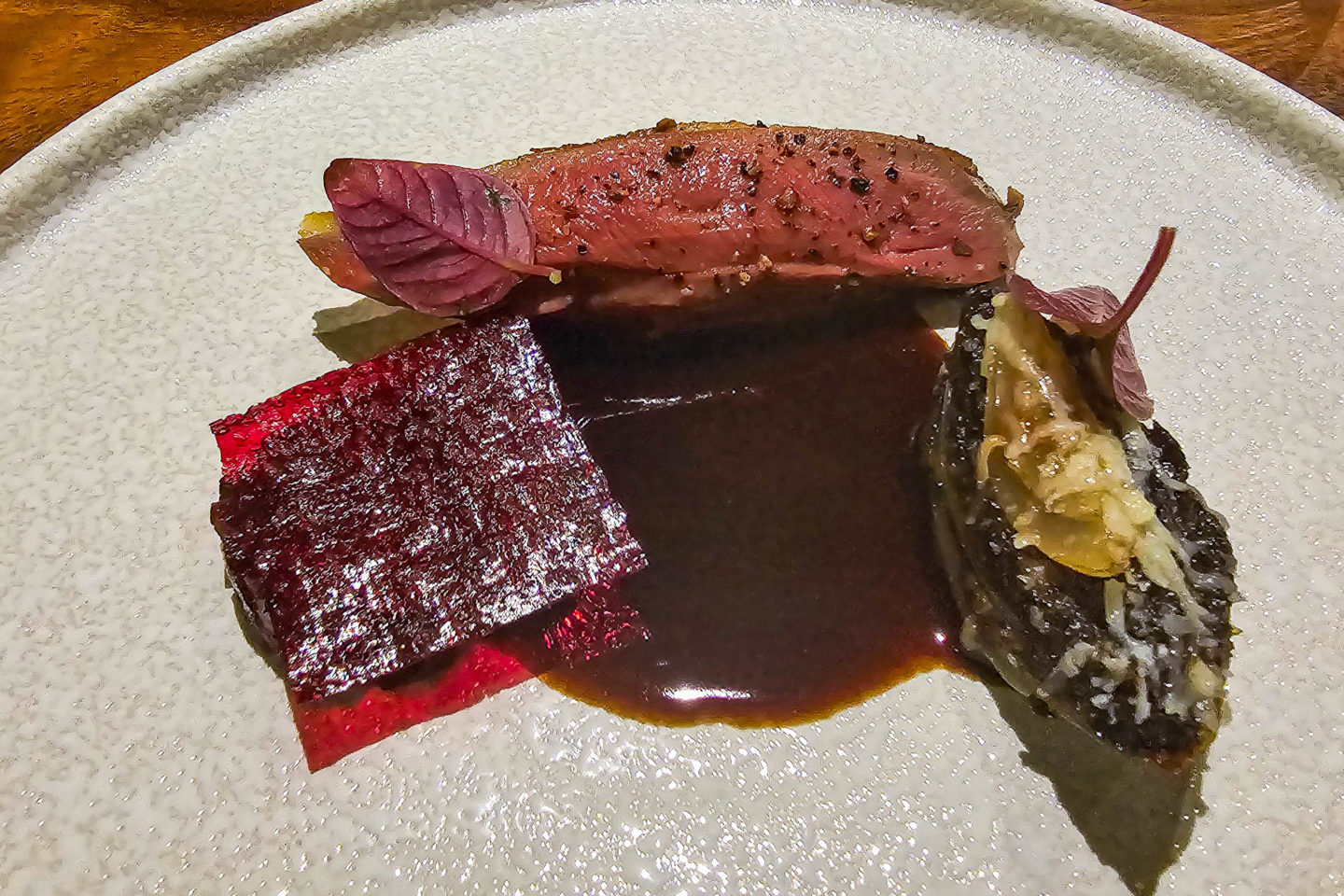
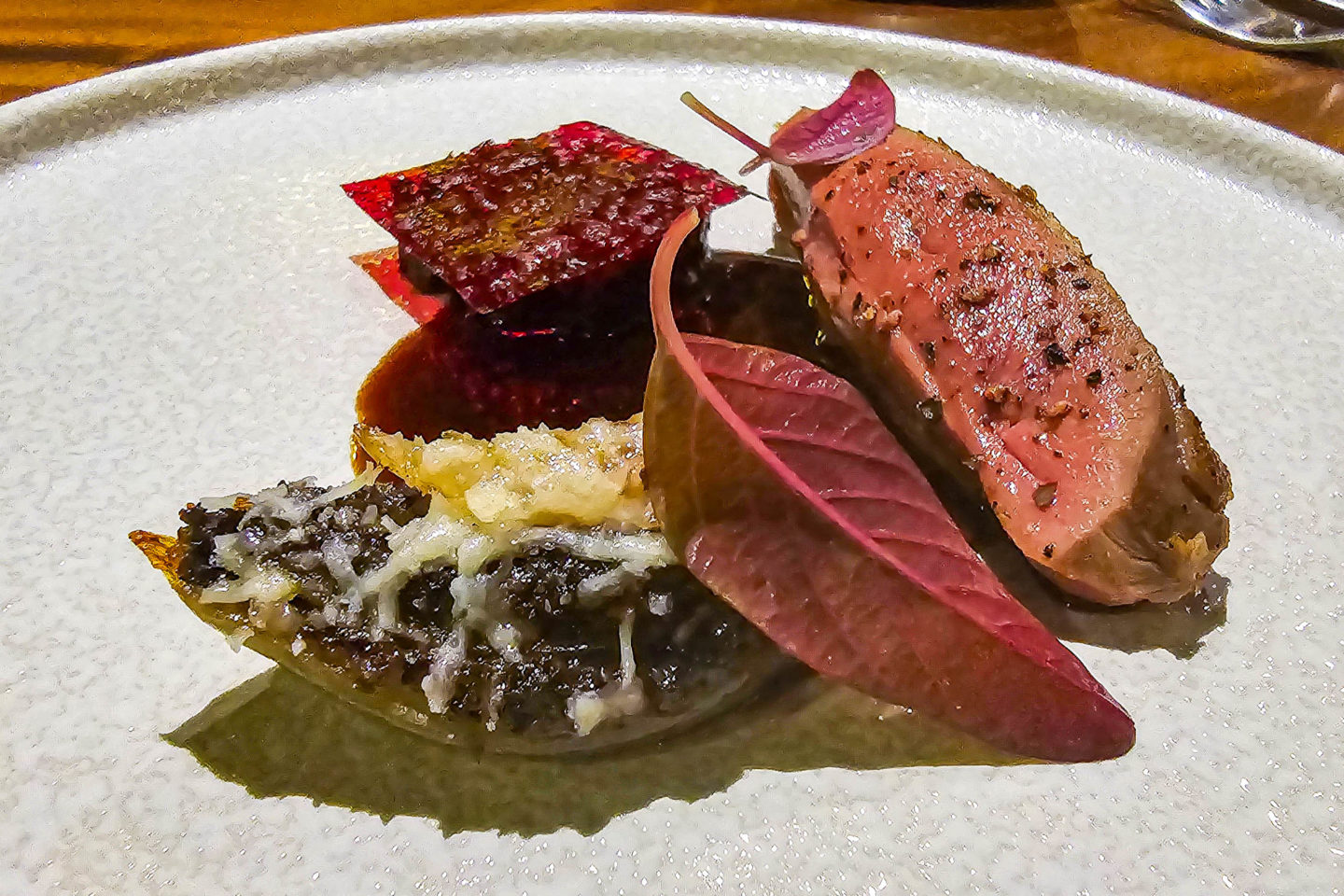
The second dish we all enjoyed as a big group was the pigeon, truffle onion, black cardmom, specifically the pigeon. It was really delicious, dry aged well. If the skin was a bit more crispy, it would have balanced the bird perfectly. I guess we got texture balance from the beetroot crisp, but the beetroot was a bit too sweet.
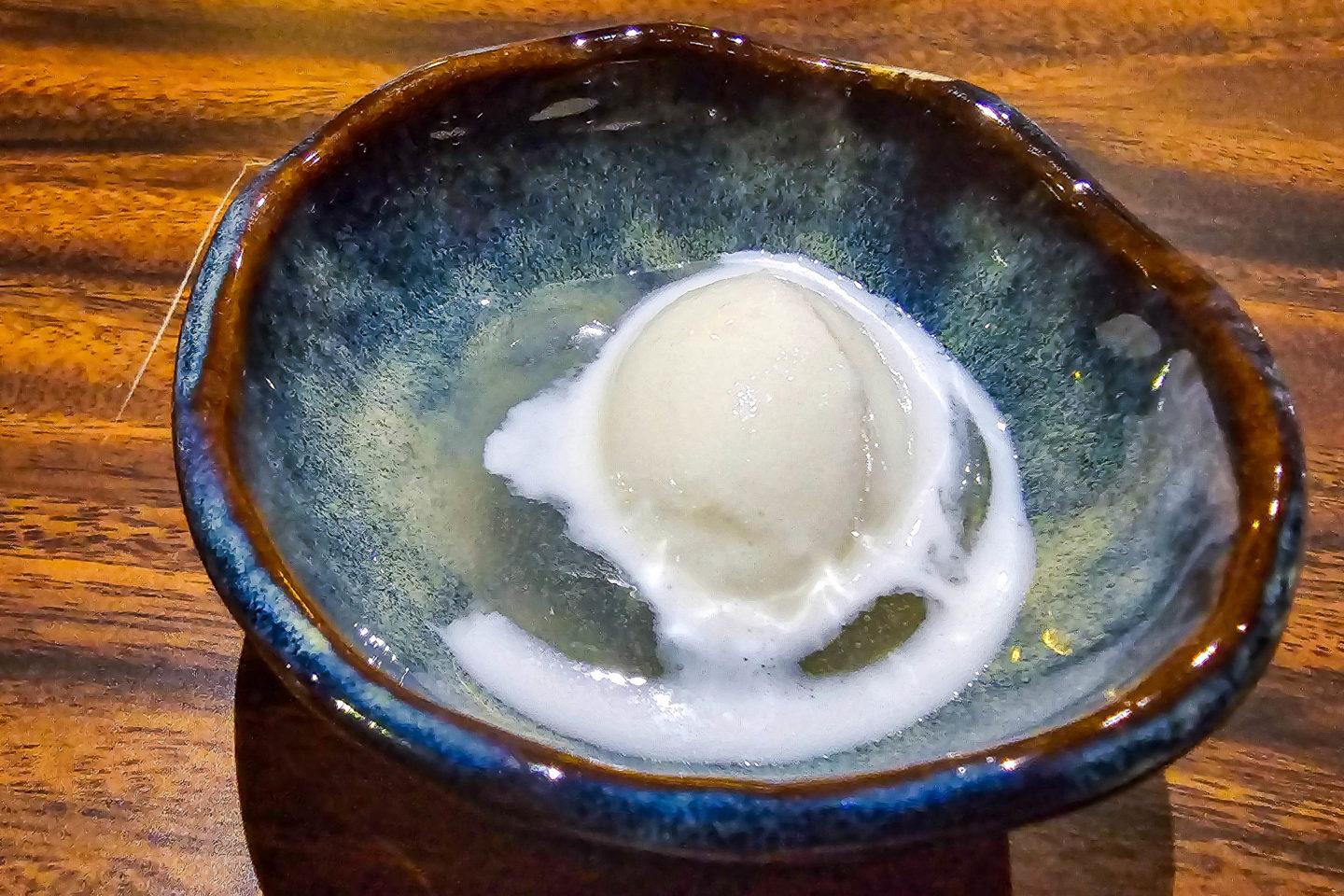
This was lait ribot, sake. It tasted like yogurt – light and refreshing.
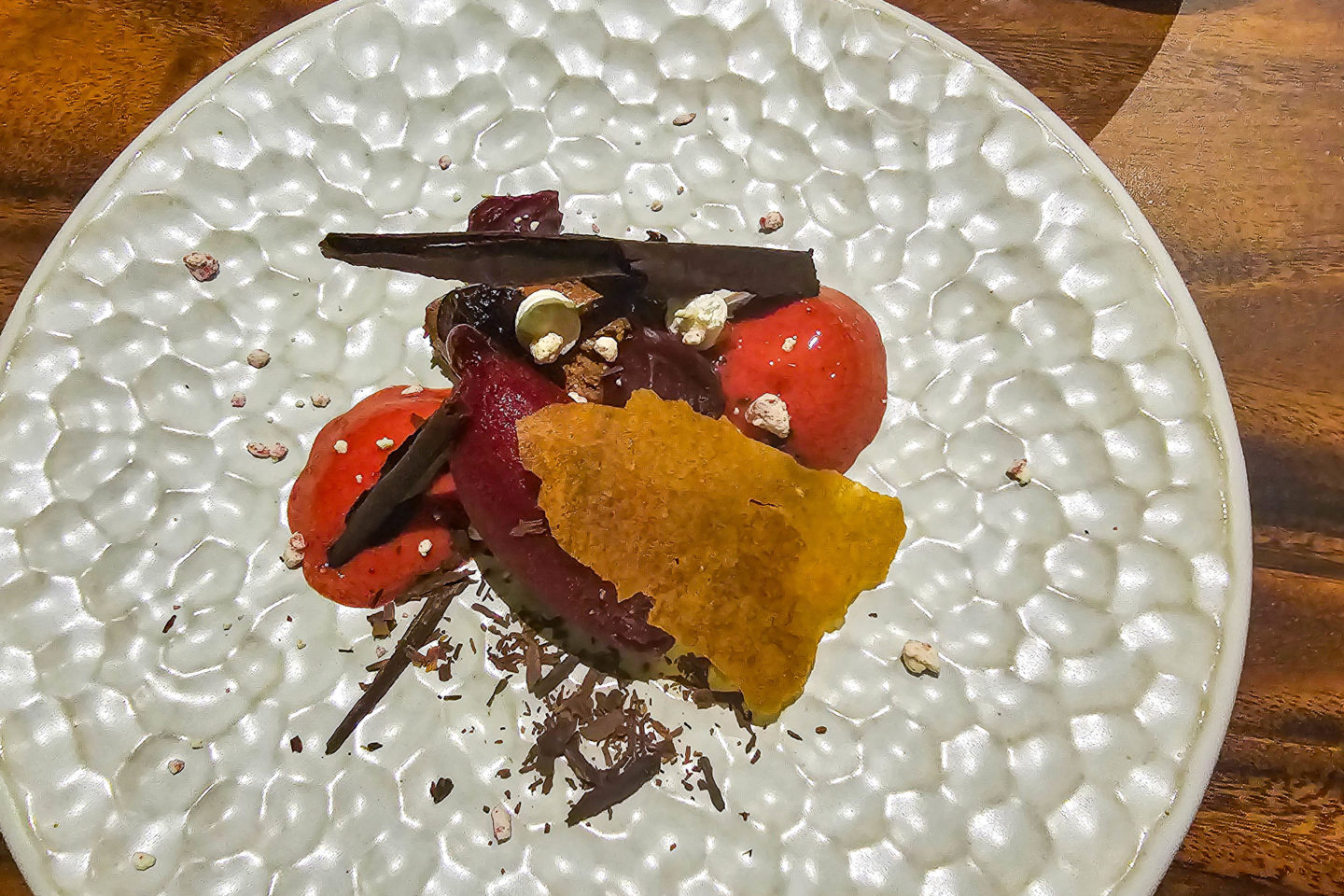
The the black forest chocolate was good, especially the salted caramel. The chocolate was decadent.

These mignardies were too sweet. Sickly sweet.
Service
There were a lot of staff. We were the only group dining there and for our group of 8, there were 20-ish people working. It was nice, reminding us of the upper class Gordon Ramsay Restaurant service style. We had a major travel fuck up which delayed our meal by almost an hour, but the staff were very understanding about it. Our only critic was that they were constantly washing dishes 1 metre near us, behind the bar. Throughout our entire meal we could hear the clinks and clatter of soap washing and this disrupted our conversation.
Herve was there at the start of the meal to greet us, but after 30 minutes of our travel fuck up, he left and went home. We felt bad for pissing him off, but after reading reviews, it seems it is normal for him to say hi then leave. We think a lot of the dishes in the second half of the menu could have been more consistent among patrons if Herve (head chef) stayed around for quality control. I get the impression he would only stay the whole night if it was a VIP or Michelin reviewer lol.
Herve was there at the start of the meal to greet us, but after 30 minutes of our travel fuck up, he left and went home. We felt bad for pissing him off, but after reading reviews, it seems it is normal for him to say hi then leave. We think a lot of the dishes in the second half of the menu could have been more consistent among patrons if Herve (head chef) stayed around for quality control. I get the impression he would only stay the whole night if it was a VIP or Michelin reviewer lol.
Review
The purpose of this restaurant is to introduce culture with French-fusion cuisines. What is the fusion with? French x Vietnamese? Because it does not show. And it is very odd to claim you are introducing “culture” to a country rich in cultures and traditions shown through their food.
After our meal and some deep discussions, we concluded most of the 5 star reviews on Google were given by citizens who had not eaten around the world enough… and the Michelin Guide was given based on the bias of the “vibes” and service of Herve Dining.
We disagree with the Michelin recommendation. The food was average, considering the abundance of ingredients available. There were some creative techniques but an overall lack of coherency with the flavours. And to highlight again, a complete menu change every 3 weeks is a red flag. There seems to be no staple dishes throughout the recent menus (based off photos on Google review).
There is still a lot of room for improvement before a Michelin star can be awarded to this restaurant.
We will always provide our honest opinion for the best value and experience.
Thanks for reading. Happy eating! 😃
After our meal and some deep discussions, we concluded most of the 5 star reviews on Google were given by citizens who had not eaten around the world enough… and the Michelin Guide was given based on the bias of the “vibes” and service of Herve Dining.
We disagree with the Michelin recommendation. The food was average, considering the abundance of ingredients available. There were some creative techniques but an overall lack of coherency with the flavours. And to highlight again, a complete menu change every 3 weeks is a red flag. There seems to be no staple dishes throughout the recent menus (based off photos on Google review).
There is still a lot of room for improvement before a Michelin star can be awarded to this restaurant.
We will always provide our honest opinion for the best value and experience.
Thanks for reading. Happy eating! 😃
